Case Study -3 : Enterprise DC
Facility DC Summery:
- This is brownfield data center, with sq ft area : 8352
- Current IT load planned – 790kW
- Per rack load varies from 3kW to 6kW
- Space cooling load : 116kW
- Total cooling load : 906kW
- Installed cooling capacity : 22no’sx30TR
- Number of racks – 252
- Ceiling return distribution system used for recirculation air
- Bottom through CRAC in use
Objectives : CFD analysis study
- Modelling of current state of data center – observations
- Predicting the efficient cooling strategy for data center by running what if scenario
- Understanding thermal profiling of the data center
- Identifying the hot and cold spot’s in the Rack Level
- Predictive simulation to understand flexibility in absorbing future IT expansion?
- Predictive simulation to understand the cooling failure scenarios to check the data center resilience (redundancy)
Simulation Conditions
- Modelling of Current Scenario
- 1st : IT load – 906kW, 9 PAHU units running (9×105 -945kW)
- Predicting the efficient cooling strategy for data center by running what if scenario
- 2nd : IT load – 906kW, 10 PAHU – 10×105 -1050kW
- 3rd : IT load – 906kW, 12 PAHU- 12×105 -1260kW & increased in the no’s of supply grills
- Predicting flexibility in absorbing future IT expansion?
- 4th : IT load – 1003kW (11% IT load increased), 14 PAHU – 14×105 -1470kW
- Predict the cooling failure scenarios to check the data center resilience (redundancy)
- 5th : IT load – 1003kW, 10 PAHU – 10×105 -1050kW (4 PAHU fails)
CFD Virtual Facility
Enterprises Data Center manager decided to use Data center Optimization services to validate the present and optimum condition to run DC to save energy and check DC resilience
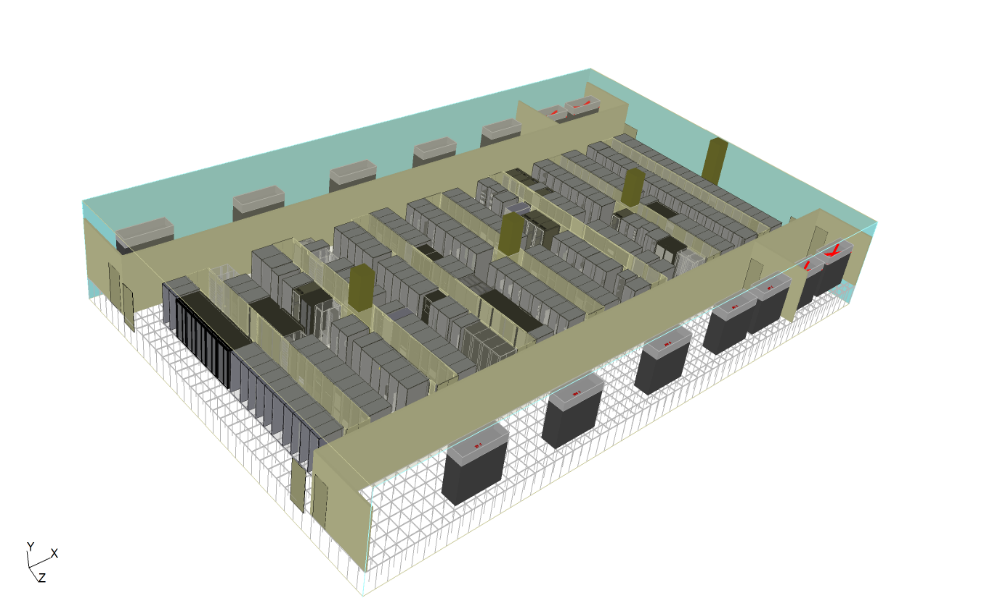
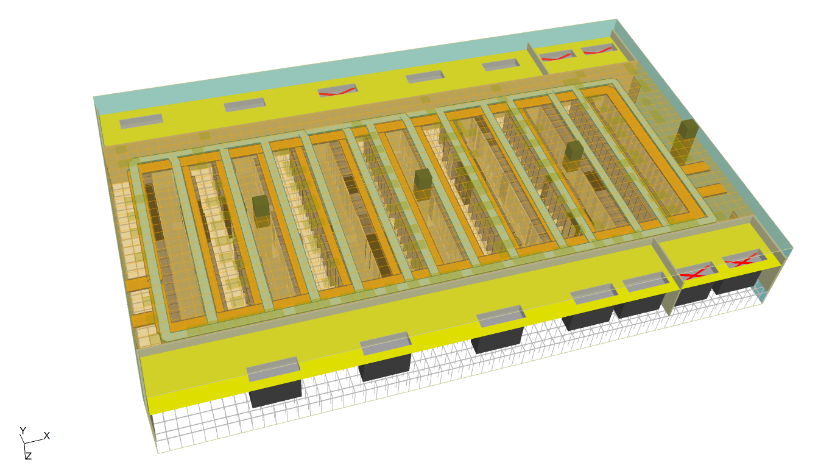
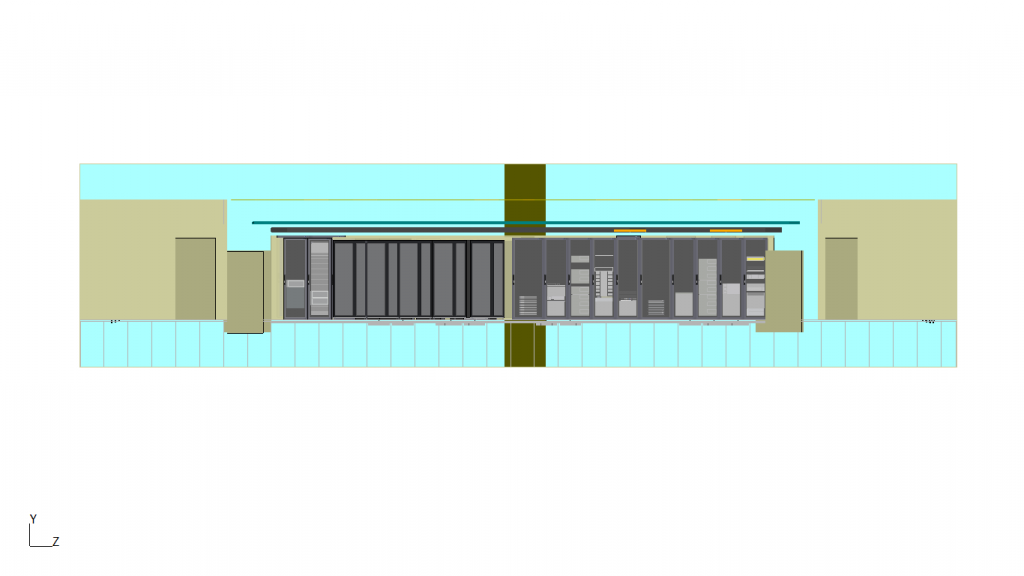
Temperature profile, Half of cabinet
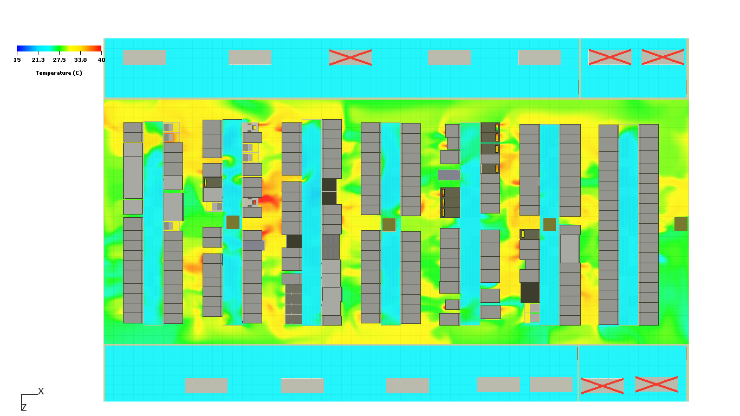
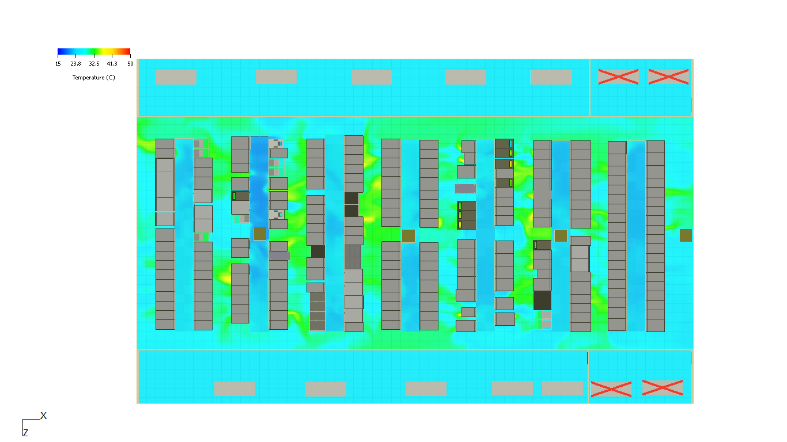

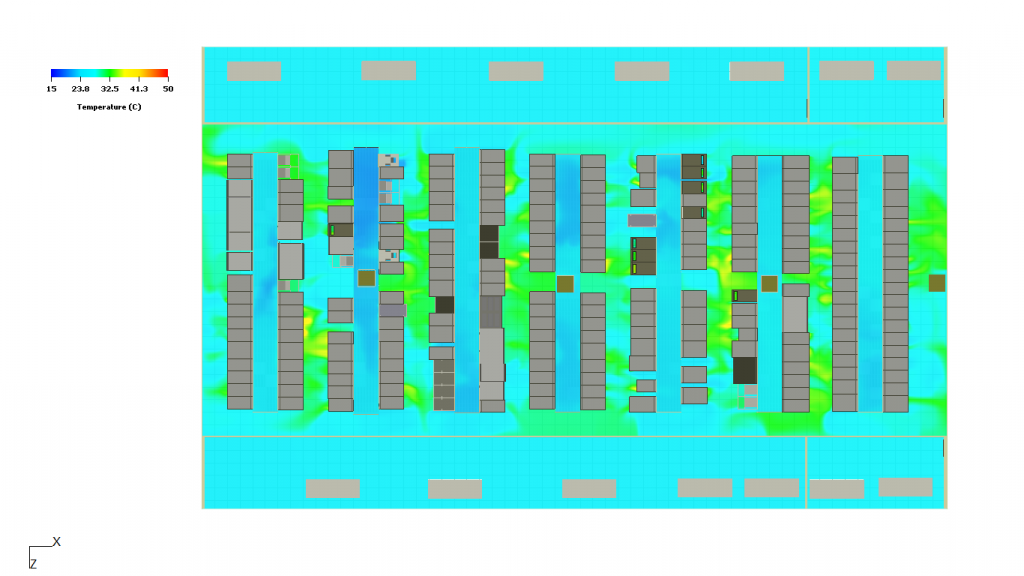
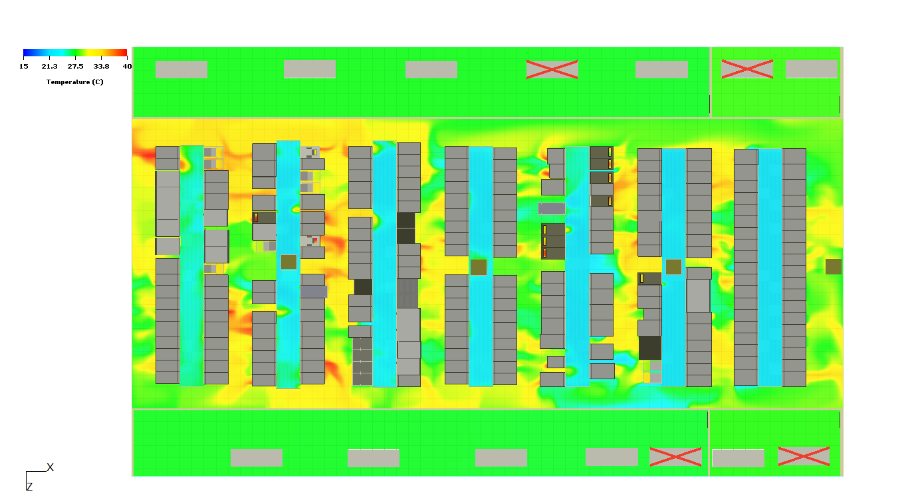
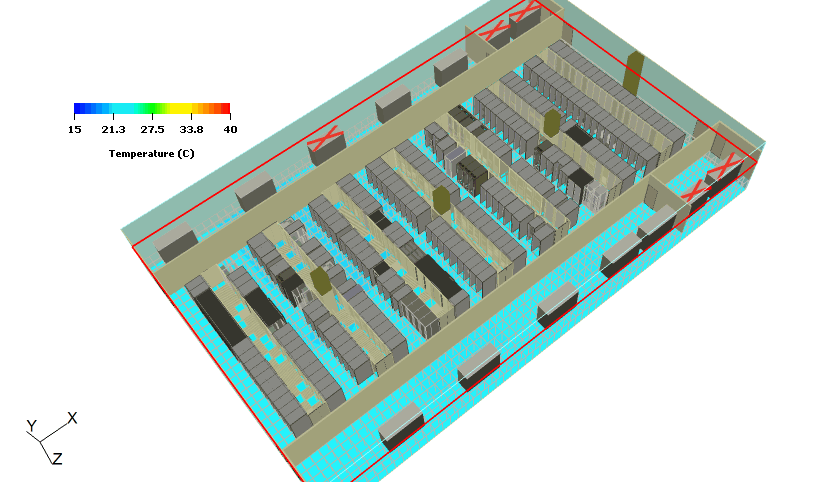

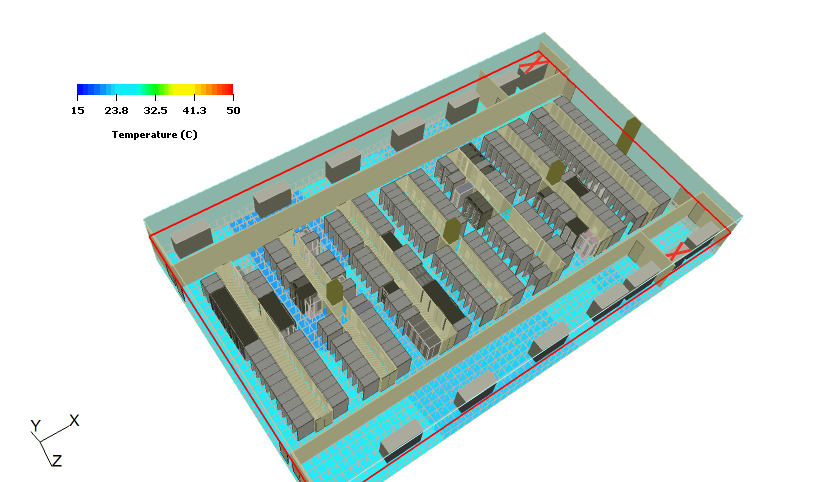
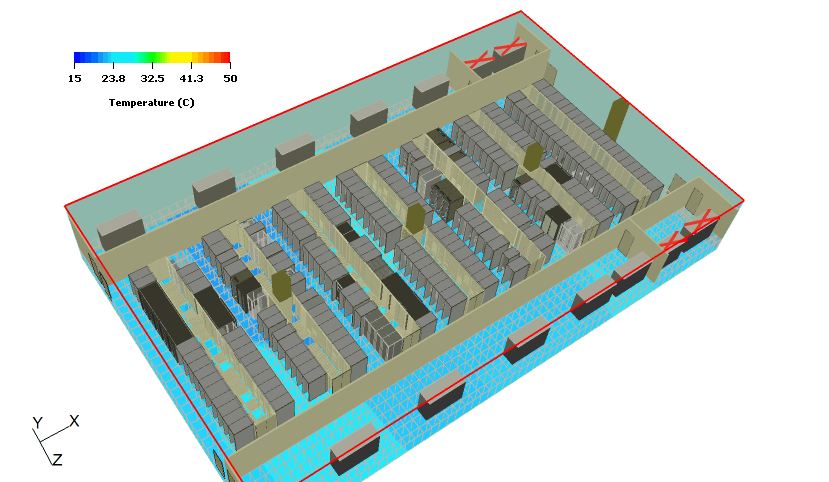

Validation points
| Simulation Condition | Intake Temp |
Outlet Temp | Net Grill Flow | ASHRAE Limits | Over Heat Racks | Rack Temp Profile | Overall Results |
| 1st Condition | ✔ | ❌ | ❌ | ❌ | ❌ | ❌ | ❌ |
| 2ndCondition | ✔ | ❌ | ❌ | ❌ | ❌ | ✔ | ❌ |
| 3rd Condition | ✔ | ❌ | ✔ | ✔ | ✔ | ✔ | ✔ |
| 4th Condition | ✔ | ❌ | ✔ | ✔ | ✔ | ✔ | ✔ |
| 5th Condition | ✔ | ❌ | ❌ | ❌ | ❌ | ❌ | ❌ |
Note: 3rd Condition is better to control the present IT load as compared others
Our Recommendations
- Use 12 PAHU units to control present 906kW IT load to avoid overheating of racks as exhaust temperature is high
- Install few more supply grills to increase the CFM flow and air pressure in the cold aisle containment
- Use blanking panels in the all racks to avoid air mixing and recirculation
- You can add only 8 to 12% additional IT load but challenge is cooling availability if 4 PAHU units fails simultaneously at a time
Summary - Benefits
- Visualized the thermal profile of the data center on present IT load
- Visualize hot and cold spot’s in the data center
- Visualized the thermal profile of the data center on present IT load with increased in cooling capacity
- Visualized the scenarios to ensured the optimum design from airflow point of view
- Demonstration of designed performance of DC up front with varying IT loads
- Data center flexibility in absorbing future IT expansion
- Predict the failure scenarios to check the data center resilience (redundancy).
